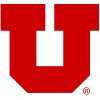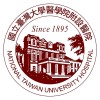
Treatment of Partial-Thickness Rotator Cuff Tears
Arthroscopic Surgical Treatment of High-grade (>50%) PartialthicknessDemonstrate that REGENETEN is superior to standard repair techniques when surgically treating high-grade (>50%) partial-thickness tears because REGENETEN preserves more of the native tendon footprint resulting in less postoperative pain and faster recovery.

Genetic Factors Affecting Risks for Rotator Cuff Disease
Studying the Genetic Relationship of Rotator Cuff TearsThis study will begin to evaluate the heritability of rotator cuff disease, and begin creation of a powerful resource for future genetic studies of rotator cuff disease.

Dry Cupping Therapy on Rotator Cuff Injuries
Rotator Cuff InjuriesShoulder Pain1 moreShoulder pain is the most common musculoskeletal problem after spine and knee complaints. Rotator cuff injuries (RCI) are the most common cause of shoulder pain. RCI includes a wide spectrum from subacromial impingement syndrome (SIS) to chronic tendinopathy, partial and total ruptures of the rotator cuff. In recent years there has been a renewed interest in traditional and complementary medicine (TCM) for various musculoskeletal problems. Cupping therapy, which is one of the most commonly used TCM methods, is one of the oldest medical applications with thousands of years of history. Although it is thought to be effective in many diseases, there are not enough studies in the literature about its effectiveness and mechanism of action. Our aim in this study is to investigate the effects of moving dry cupping therapy on pain, range of motion (ROM), functionality and quality of life in RCI.

The Use of Diadynamic in Association With a Manual Therapy Program for Patients With Impingement...
Shoulder Impingement SyndromeThe aim of this study will be to evaluate the effects of the use of manual therapy and diadynamic in muscle trigger points in the upper trapezius muscle in individuals diagnosed with shoulder impingement syndrome, unilateral shoulder as functional capacity, pain intensity and pain threshold the pressure.

Enhanced Function and Quality of Life Following 5 Months of Exercise Therapy for Patients With Rotator...
Full Thickness Rotator Cuff TearThis study aims to evaluate the effect of 5 months of exercise therapy for patients with irreparable rotator cuff tears.

Cycloergometer and Rotator Cuff Tear
Rotator Cuff TearThe cycloergometer is a mechanical device consisting of a bicycle frame fixed on a support base, designed to measure the amount of muscle work performed during exercise and the resistance to pedaling. The cycloergometer has been already employed in many fields of medicine. However, up to date, a little use of cycloergometer in the management of chronic joint diseases has been documented and scientific studies have not clarified if cycloergometer is effective in these diseases and, particularly, in Rotator Cuff Tear patients.

BioWick SureLock Clinical Outcomes Study
Rotator Cuff TearThe purpose of this study is to collect postmarket data in subjects who receive surgical treatment of a full-thickness rotator cuff tear (of at least 1.5 cm) with the BioWick™ SureLock™ implant. Both performance and safety data will be collected.

Effect of Isometric Exercise on Pain Perception in Rotator Cuff Related Shoulder Pain
Rotator Cuff TendinitisThe aim of this study is to compare the immediate effects of an acute bout of isometric exercise of the shoulder external rotator muscles above and below pain threshold on pain intensity, pain threshold, conditioned pain modulation and pain free force in external rotation. To evaluate the results of the exercise, the subjects will be assessed at pre-intervention, immediately post-intervention and after and 45 minutes after each experimental condition.

Transcutaneous Pulse Radiofrequency Treatment for Subacromial Impingement Syndrome
Shoulder Impingement SyndromeShoulder pain is the most common musculoskeletal problem after low back and neck pain. Subacromial impingement syndrome is one of the most common diseases that causes shoulder pain. Many methods are used to reduce pain and accelerate functional rehabilitation in patients with shoulder pain. Transcutaneous pulse radiofrequency therapy (TCPRF) is a needle-free, painless, and outpatient physical therapy modality that can be used to treat shoulder impingement syndrome. Acromio-humeral distance and supraspinatus tendon thickness measurements with ultrasound are reliable and effective methods to diagnose subacromial impingement syndrome. Although there are previous studies investigating the effectiveness of TCPRF treatment in patients with shoulder pain, there are no studies evaluating the effectiveness of treatment with ultrasound examination. In this study, the investigators aimed to show the effect of TCPRF treatment on pain, range of motion, functional status and ultrasound findings in subacromial impingement syndrome.

Kinesio Taping Compared to Exercise Intervention for Round Shoulder Subjects With Impingement Syndrome...
Shoulder Impingement Syndrome (SIS); Round Shoulder Posture (RSP)To compare the effect between the exercise intervention (strengthening exercise and stretching exercise) and exercise intervention with taping on decreasing round shoulder posture and improving symptoms in subjects with shoulder impingement syndrome/round shoulder syndrome.
